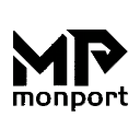Laser power: The laser output power is the output energy of the laser system, and laser cutting represents the ability of the laser beam to melt the material per unit time. Laser power is the basic value of laser processing. The power level directly determines the objects that can be processed by the equipment. For example, the power requirements of paper and sponge boards are very low, only a few tens of watts; the power requirements of wood boards, acrylics and metal sheets are relatively high. From tens of watts to hundreds of watts; metal thick plates have the largest power requirements, ranging from kilowatts to tens of thousands of watts.
Laser speed: The laser speed is the speed at which the laser head moves. The higher the cutting speed of laser cutting, the shorter the cutting time and the higher the production efficiency of laser cutting. However, when other parameters are fixed, there is no linear relationship between the laser cutting speed and the cutting quality. A reasonable cutting speed is a range value below which the energy of the laser beam remains too much on the surface of the part to form overburning, above which the energy of the laser beam is too late to completely melt the part material, resulting in cut is impenetrable.
Air pressure: Air pressure generally refers to the air pressure of the auxiliary gas. When the laser head emits light to cut the material, the auxiliary gas can help the laser process the cutting speed and blow away the molten material at the same time. The air pressure of the auxiliary gas also affects the cutting efficiency of the cutting machine. If the thickness of the material processed by laser cutting increases or the cutting speed is slow, the gas pressure should be appropriately reduced. Cut with lower air pressure to prevent frost formation.
Focus: The laser output is finally focused at the point with the highest power density through a special lens, and the focal spot diameter is proportional to the focal depth of the focusing lens. The focus of laser cutting is to set different thicknesses at different positions. The correct focus position is an important condition for obtaining stable cutting quality. According to different materials and processing requirements, the focus position is also different. Generally speaking, there are three options for the focus position. The focus is on the surface of the material, the focus is on the surface of the material, and the focus is on the inside of the material, which needs to be determined according to the actual processing.
